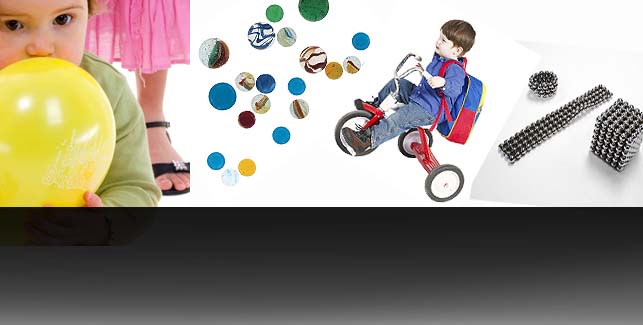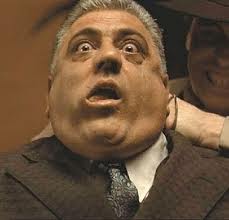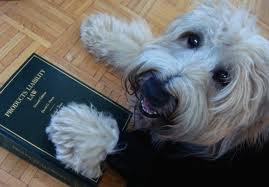CPSC Regulatory Issues Often Impact Product Liability
By admin on December 26, 2013
 Regulatory enforcement by the Consumer Products Safety Commission (“CPSC”) is on the upswing. As product liability litigation and regulatory activities often become entwined, it is all the more important to appreciate the interconnection between litigation and regulatory compliance. In a personal injury action, defending a product that has been subjected to the harsh glare of regulatory scrutiny can be challenging.
Regulatory enforcement by the Consumer Products Safety Commission (“CPSC”) is on the upswing. As product liability litigation and regulatory activities often become entwined, it is all the more important to appreciate the interconnection between litigation and regulatory compliance. In a personal injury action, defending a product that has been subjected to the harsh glare of regulatory scrutiny can be challenging.
Plaintiffs in product liability litigation will routinely seek evidence of any civil penalty investigation by CPSC, including any assessment of penalties. If the CPSC has sent a letter to a manufacturer to advise that it has made a preliminary determination that the product contains a substantial product hazard, to what extent is this evidence admissible in a product liability suit against the manufacturer?
In a well-written article, Kenneth Ross explores the interplay between CPSC concerns and product liability litigation in “The Intersection of Product Liability and Regulatory Compliance,” an article that appeared in “Strictly Speaking,” the newsletter of DRI’s Product Liability Committee (Vol. 10, Issue 3, Nov 15, 2013).
liability litigation in “The Intersection of Product Liability and Regulatory Compliance,” an article that appeared in “Strictly Speaking,” the newsletter of DRI’s Product Liability Committee (Vol. 10, Issue 3, Nov 15, 2013).
Ross observes that correspondence in the manufacturer’s files between the CPSC and the manufacturer, which may contain reports made under Section 15 and Section 37, or discuss subsequent corrective action, is discoverable. Although CPSC’s employees are not permitted by CPSC rule to testify in litigation about anything done or not done by the Agency in connection with a report and subsequent corrective action, former CPSC employees are frequently recruited to testify. Moreover, as Ross reminds us, there is certainly no prohibition on plaintiff’s expert being able to render an opinion concerning defect and causation, based in part on what is contained in CPSC’s files.
But if plaintiff seeks to use CPSC’s actions to support their case, can a manufacturer use CPSC’s inaction to support its contention that the product did not violate CPSC’s rules and regulations? According to 15 U.S.C. ¶ 2074(b), the failure of the CPSC to take any action or commence a proceeding with respect to the safety of a consumer product is not inadmissible in evidence at a civil trial.
 This rule is not always followed in practice. The Sixth Circuit recently admitted evidence of CPSC inaction, despite the regulation, as evidence that the manufacturer did not violate safety rules. See, Cummins v. BIC USA, Inc., — F.3d —, 2013 WL 4082013 (8/14/13). In Cummins, the Sixth Circuit distinguished a situation where the CPSC had completely failed to take any action and the situation, such as in the case at bar, where the CPSC had engaged in substantial activity in regulating the BIC lighter at issue.
This rule is not always followed in practice. The Sixth Circuit recently admitted evidence of CPSC inaction, despite the regulation, as evidence that the manufacturer did not violate safety rules. See, Cummins v. BIC USA, Inc., — F.3d —, 2013 WL 4082013 (8/14/13). In Cummins, the Sixth Circuit distinguished a situation where the CPSC had completely failed to take any action and the situation, such as in the case at bar, where the CPSC had engaged in substantial activity in regulating the BIC lighter at issue.
Is evidence of a CPSC-mandated product recall admissible? Ross correctly observes that defending a product liability case involving a product that has been subject to a recall can be difficult, although hardly impossible. A plaintiff should be required to prove that his or her injury was caused by the bad aspect of the product that caused the recall before testimony concerning the recall is admitted.
It is bad enough for a jury to hear during opening statements that the product at issue in the case was recalled. At a minimum, a plaintiff should be required to demonstrate during argument on motions in limine that the alleged defect at issue in the recall was the defect alleged in the pleadings to be the proximate cause of plaintiff’s injury and is, in fact, the proximate cause of plaintiff’s injury. To permit evidence of the recall otherwise potentially taints the proceedings with unfair prejudice. It may also be argued that evidence of the recall is barred as a “subsequent remedial measure” and therefore not admissible to prove a defect.

 In a decision issued on March 7, 2013, the Supreme Court of Florida reaffirmed Florida’s commitment to adherence to the economic loss rule in product liability litigation. In
In a decision issued on March 7, 2013, the Supreme Court of Florida reaffirmed Florida’s commitment to adherence to the economic loss rule in product liability litigation. In 
 Applying the economic loss doctrine, the Kentucky Supreme Court agreed with Mr. Tate holding that the purchaser could not recover from the manufacturer under any tort theory. The consortium was limited to contractual remedies, all of which expired years earlier.
Applying the economic loss doctrine, the Kentucky Supreme Court agreed with Mr. Tate holding that the purchaser could not recover from the manufacturer under any tort theory. The consortium was limited to contractual remedies, all of which expired years earlier.
 The Toxic Tort Litigation Blog brings to the attention of defense practitioners weapons to add to their defense arsenal. An article in the Bloomberg BNA Toxics Law Reporter (6/14/02), titled "
The Toxic Tort Litigation Blog brings to the attention of defense practitioners weapons to add to their defense arsenal. An article in the Bloomberg BNA Toxics Law Reporter (6/14/02), titled " How successful have Twiqbal motions been in product liability cases? A
How successful have Twiqbal motions been in product liability cases? A